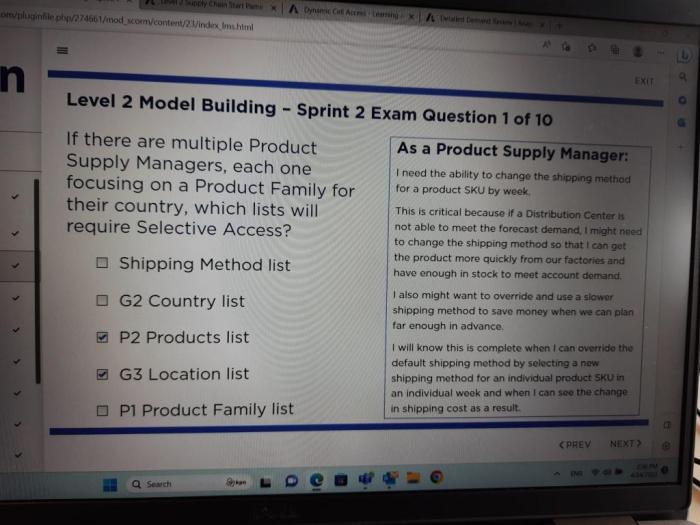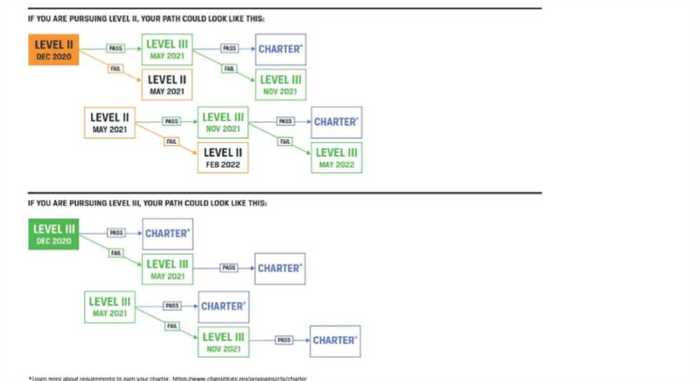Anaplan level 2 sprint 1 exam answers – Ace your Anaplan Level 2 Sprint 1 exam with this comprehensive guide and answer key. This guide covers the exam format, core concepts, advanced modeling techniques, and real-world applications, providing you with the knowledge and strategies to excel.
The exam tests your understanding of Anaplan’s fundamental concepts and functionality, including data manipulation, functions, and modules. It also assesses your ability to apply advanced modeling techniques, such as multi-dimensional modeling, time-based modeling, and scenario planning.
Anaplan Level 2 Sprint 1 Exam Overview
The Anaplan Level 2 Sprint 1 exam is a significant assessment designed to evaluate the knowledge and skills of individuals in utilizing Anaplan’s advanced capabilities. It is a mandatory step towards obtaining the Anaplan Level 2 certification, which is highly valued in the field of enterprise performance management.
The exam consists of 60 multiple-choice questions and has a time limit of 90 minutes. Candidates are expected to demonstrate proficiency in various topics, including data modeling, formula writing, module linking, and dashboard creation. A passing score of 70% or higher is required to pass the exam.
Exam Format
- 60 multiple-choice questions
- 90-minute duration
- 70% passing score
Exam Content
- Data Modeling
- Formula Writing
- Module Linking
- Dashboard Creation
Exam Preparation Strategies

To excel in the Anaplan Level 2 Sprint 1 Exam, it is crucial to adopt effective study methods and preparation strategies. This involves identifying key concepts, managing time efficiently, navigating the exam, and managing exam pressure.
Effective study methods include reviewing course materials thoroughly, practicing with sample questions, and seeking clarification on challenging concepts. Utilize official study guides and resources provided by Anaplan to ensure comprehensive coverage of the exam topics.
Time Management
Time management is essential during the exam. Allocate time wisely for each section, prioritizing questions based on their difficulty and point value. Utilize the exam timer effectively to avoid spending excessive time on any one question.
Exam Navigation, Anaplan level 2 sprint 1 exam answers
Familiarize yourself with the exam format and navigation tools. Practice using the online testing platform to ensure seamless navigation during the actual exam. Utilize the flagging feature to mark questions for review later.
Handling Exam Pressure
Exam pressure is a common experience. Practice relaxation techniques such as deep breathing exercises to manage stress levels. Stay focused on the task at hand and avoid dwelling on unanswered questions.
Identifying Key Concepts
Focus on understanding the core concepts and principles covered in the exam syllabus. Analyze past exam papers and sample questions to identify frequently tested topics. Prioritize your studies accordingly.
Core Concepts and Functionality
Anaplan’s Level 2 Sprint 1 exam evaluates candidates’ proficiency in core concepts and functionality. This includes:
Understanding and utilizing Anaplan’s fundamental data structures, such as lists, modules, and dimensions, is crucial. These structures enable efficient data organization and manipulation, allowing users to create complex models.
Functions
Functions play a vital role in Anaplan, providing pre-defined calculations and transformations. Candidates should be familiar with commonly used functions, such as SUM, AVERAGE, and IF, as well as more advanced functions for data manipulation, like INDEX and LOOKUP.
Modules
Modules are reusable building blocks that encapsulate functionality and data. They promote code reusability and simplify model development. Candidates should understand how to create, import, and utilize modules effectively.
Data Manipulation Techniques
Anaplan offers various data manipulation techniques to transform and analyze data. These include sorting, filtering, and grouping operations. Candidates should be able to apply these techniques to extract meaningful insights from data.
For example, consider a model that tracks sales data. By using the SUM function, candidates can calculate the total sales for a given period. They can also use the IF function to create conditional statements, such as identifying customers who have exceeded a certain sales threshold.
Additionally, candidates should be able to leverage Anaplan’s data import and export capabilities to integrate data from external sources and share results with stakeholders.
Advanced Modeling Techniques

Advanced modeling techniques in Anaplan enhance data analysis and decision-making by enabling users to create complex and sophisticated models. These techniques include multi-dimensional modeling, time-based modeling, and scenario planning.
Multi-dimensional modeling allows users to create models that represent data from multiple perspectives. For example, a model could be created to track sales data by product, region, and time period. This allows users to analyze data from different angles and identify trends and patterns that would not be visible in a single-dimensional model.
Time-based modeling allows users to create models that simulate the effects of time on data. For example, a model could be created to forecast sales based on historical data and assumptions about future trends. This allows users to make informed decisions about future investments and strategies.
Scenario planning allows users to create multiple versions of a model to explore different “what-if” scenarios. For example, a model could be created to forecast sales under different economic conditions. This allows users to identify the risks and opportunities associated with different scenarios and make contingency plans accordingly.
Best Practices for Implementing Advanced Modeling Techniques
When implementing advanced modeling techniques, it is important to follow best practices to ensure that the models are accurate, reliable, and useful. These best practices include:
- Start with a clear understanding of the business problem that you are trying to solve.
- Use the appropriate modeling technique for the problem that you are trying to solve.
- Validate your models by comparing them to real-world data.
- Document your models so that others can understand and use them.
- Use Anaplan’s built-in modeling tools and features to simplify the modeling process.
By following these best practices, you can ensure that your Anaplan models are effective and provide valuable insights for your business.
Case Studies and Real-World Applications

Anaplan’s capabilities extend beyond theoretical concepts, as evidenced by its successful implementation in various industries. Case studies provide valuable insights into the practical applications of Anaplan, highlighting the challenges businesses face and the solutions Anaplan offers.
By examining real-world examples, we can understand how Anaplan empowers businesses to make informed decisions, optimize processes, and achieve tangible results.
Case Study: Sales Forecasting in the Consumer Goods Industry
- Challenge:A consumer goods company struggled with inaccurate sales forecasts, leading to overstocking and lost revenue.
- Solution:Anaplan’s advanced modeling techniques enabled the company to create a dynamic sales forecasting model that incorporated multiple data sources and predictive analytics.
- Result:Improved forecast accuracy by 20%, resulting in optimized inventory levels and increased sales revenue.
Exam Tips and Tricks: Anaplan Level 2 Sprint 1 Exam Answers

To enhance exam performance, candidates should adopt effective strategies and employ specific techniques. This section provides valuable tips and tricks to optimize preparation and ensure success.
A crucial aspect of exam preparation involves familiarizing oneself with the exam format and question types. Understanding the structure and content of the exam enables candidates to allocate time efficiently and prioritize their efforts accordingly.
Time Management
- Prioritize questions based on difficulty and allocate time accordingly. Start with questions that you are confident in answering to build momentum and confidence.
- Utilize the scratch paper provided to jot down important formulas, concepts, or calculations for quick reference during the exam.
- Manage time effectively by avoiding spending excessive time on any one question. If a question proves to be particularly challenging, move on and return to it later if time permits.
Difficult Questions
- Approach difficult questions systematically by breaking them down into smaller, manageable parts.
- Identify the key concepts and requirements of the question and focus on addressing those aspects specifically.
- Utilize logical reasoning and critical thinking skills to eliminate incorrect answer choices and narrow down the possibilities.
Review and Verification
- Before submitting the exam, take time to review and verify your answers thoroughly.
- Check for any errors or inconsistencies in calculations or logic.
- Ensure that all questions have been answered and that the responses are clear and concise.
User Queries
What is the duration of the Anaplan Level 2 Sprint 1 exam?
The exam is 90 minutes long.
What is the passing score for the Anaplan Level 2 Sprint 1 exam?
The passing score is 70%.
What resources are available for exam preparation?
Anaplan provides various resources, including study guides, practice exams, and online training.